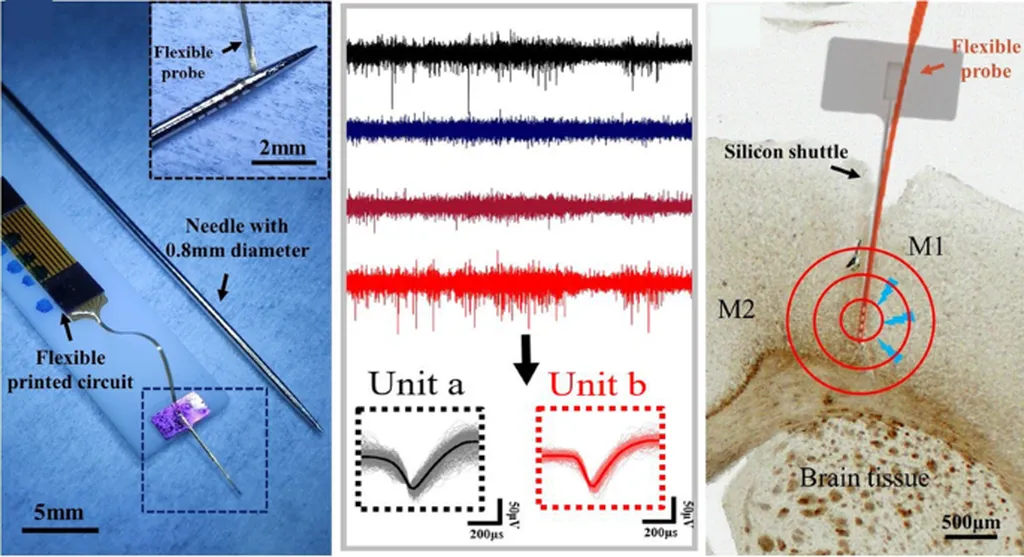In the rapidly evolving landscape of brain-computer interface (BCI) technology, a significant shift is underway from rigid to flexible neural electrodes, promising to revolutionize how we interact with neural signals and potentially unlock new avenues in medical rehabilitation and beyond. At the forefront of this transition is Dan Yang, a researcher from the Harbin Institute of Technology in China, whose recent work published in *BMEMat* (Biomedical Engineering and Materials) sheds light on the advancements and implications of this critical technology.
Traditional BCI systems have relied on rigid electrodes to transmit signals between the brain and external devices. However, these electrodes often face compatibility issues with the soft, dynamic nature of biological tissue. “The mismatch in mechanical properties between rigid electrodes and neural tissue can lead to rejection reactions and tissue damage, ultimately compromising the performance and longevity of the electrodes,” explains Yang. This limitation has spurred the development of flexible electrodes, which are better suited to the brain’s softness and curvature, reducing mechanical damage and improving signal transmission accuracy.
The shift to flexible electrodes is not just a technological upgrade; it represents a paradigm shift in how we approach neural interfacing. “Flexible electrodes can conform to the complex geometry of the brain, providing a more stable and reliable connection,” says Yang. This enhanced adaptability opens up new possibilities for exploring brain function mechanisms and developing innovative neural interface technologies.
The implications of this research extend beyond medical applications. In the energy sector, for instance, understanding and interfacing with neural signals could lead to breakthroughs in bioenergy harvesting and neural-controlled systems. Imagine a future where neural interfaces power devices or control industrial processes with unprecedented precision and efficiency. The potential commercial impacts are vast, with flexible electrodes playing a pivotal role in this transformative journey.
As the field continues to evolve, the integration of flexible electronics into BCI systems is expected to drive further innovation. “The future of BCI technology lies in the development of flexible, biocompatible materials that can seamlessly integrate with neural tissue,” Yang envisions. This research not only highlights the current advancements but also sets the stage for future developments, offering valuable insights for enhancing the performance and user experience of BCI systems.
In conclusion, the transition from rigid to flexible neural electrodes marks a significant milestone in the field of brain-computer interfaces. With researchers like Dan Yang leading the charge, the future of neural interfacing looks brighter and more promising than ever. As published in *BMEMat* (Biomedical Engineering and Materials), this research underscores the importance of flexible electronics in shaping the next generation of neural technologies, paving the way for groundbreaking applications in medical rehabilitation and beyond.

